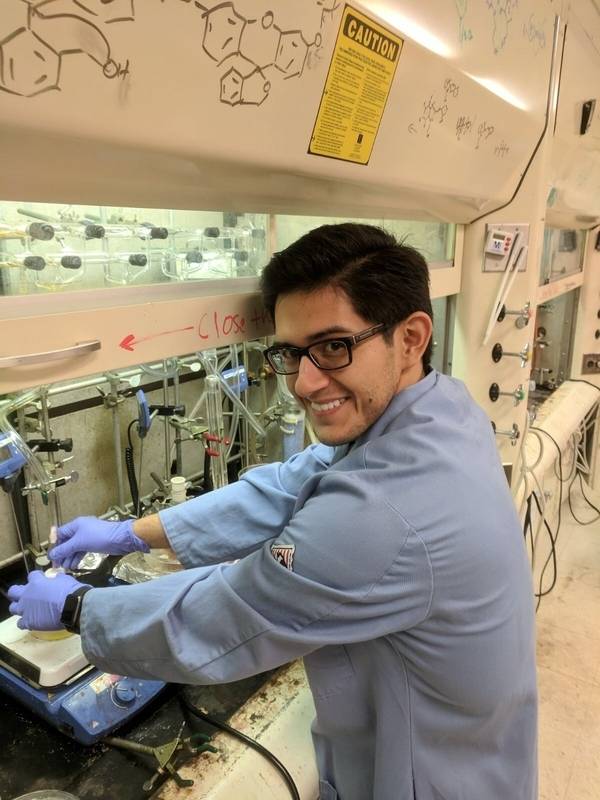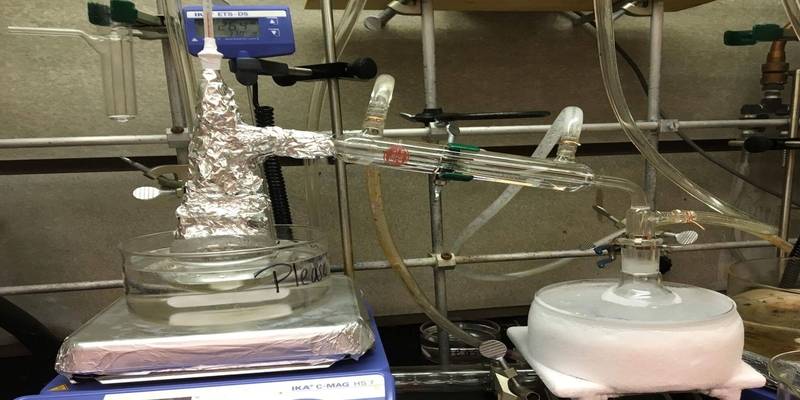Once upon a time, thousands and thousands of people suffered from pain with no easy solutions to relieve it. Now, we have Advil, Tylenol, and hundreds of types of painkillers in form of pills readily accessible all around the world. How did this come to be? While you think about, I bring you a story of a young scientist who lives and works in the middle of our vast cornfields.
This man’s name is Julio, and he has dedicated his (graduate) life, the prime years of his youth, to the quest of finding a pill for myotonic dystrophy. Myotonic dystrophy is part of a group of inherited disorders called muscular dystrophies. It is the most common form of muscular dystrophy that begins in adulthood, affecting about 1 in 8000 people worldwide. As part of the Drug Discovery subgroup of Zimmerman research group from the Department of Chemistry, Julio’s research involves making therapeutic molecules to be used for treatment of genetic diseases. Specifically, he targets RNA and DNA sequences that cause Myotonic Dystrophy Type 1 (DM1). Thus far, they have focused on RNA for treatments, but more recently have begun to target DNA so that a cure of the disease becomes a possibility. Since this disease is genetic, stopping it from being passed down through generations is an added goal of the medical community. Myotonic dystrophy is also associated with other genetic diseases, such as Huntington’s disease.

Julio’s contribution to the quest for a cure for myotonic dystrophy is that he uses traditional organic chemistry procedures to run reactions under very controlled conditions. He then purifies the products of said reactions to obtain a desired compound. The DNA that causes DM1 is an expanded CTG repeat, which is transcribed to CUG in RNA. What that means is that the genetic code that causes DM1 is an extended version of what is otherwise considered normal. The expanded RNA sequester proteins, proteins that inhibit transport to other areas of a cell, then lead to a deficiency. Julio targets this RNA to release the bound protein and thus restore normal levels. However, since it is the DNA that controls RNA, if the DNA does not change, the RNA will continue to be produced, which means that targeting RNA is more of a treatment than a cure.
Julio also explores if certain ligands, or binding molecules, can cause a DNA contraction so that the expanded CTG repeats get shorter. To do this, he tests the binding of specific ligands to the DNA using a calorimetry technique. Calorimetry measures the heat of certain reactions, and if the heat change is really high, it generally indicates strong binding. In the case of certain ligands binding to this specific DNA sequence, if the binding is strong, that’s good because it shows that the ligand and DNA bind to each other. If this becomes a possibility, then the affected DNA will be closer to what a typical CTG repeat looks like, leading to the disease symptoms being less severe.
To bring lab work to life, Julio tests the toxicity of his products to make sure they don’t kill cells. In vivo (in a living organism) studies are done with flies to see if the ligands behave in a live model. These kind of applications are important to show the medical community and the world that the research Julio is doing is applicable to human beings.
So what inspired all of this work? Julio wanted to apply organic chemistry to something with a clear, rational, and big impact. Currently, a lot of focus in organic chemistry is in developing new reactions and methods, but he wanted to use existing methods and reactions to discover something more meaningful. Another field he is interested in using all his skills is to find a cure for cancer. Since his undergraduate research days, Julio has been captivated by the scientific aspect of research and being able to investigate the boundaries of the known and unknown. As he comes from a culture that mostly accepts without questioning too much, from a personal standpoint, he wants to set an example to think critically about everything.
And hopefully someday, the result of that questioning and critical thinking will be a pill that cures myotonic dystrophy, or maybe one that even cures cancer, and it will be as readily available as a Tylenol or Advil that we take without a second thought.








